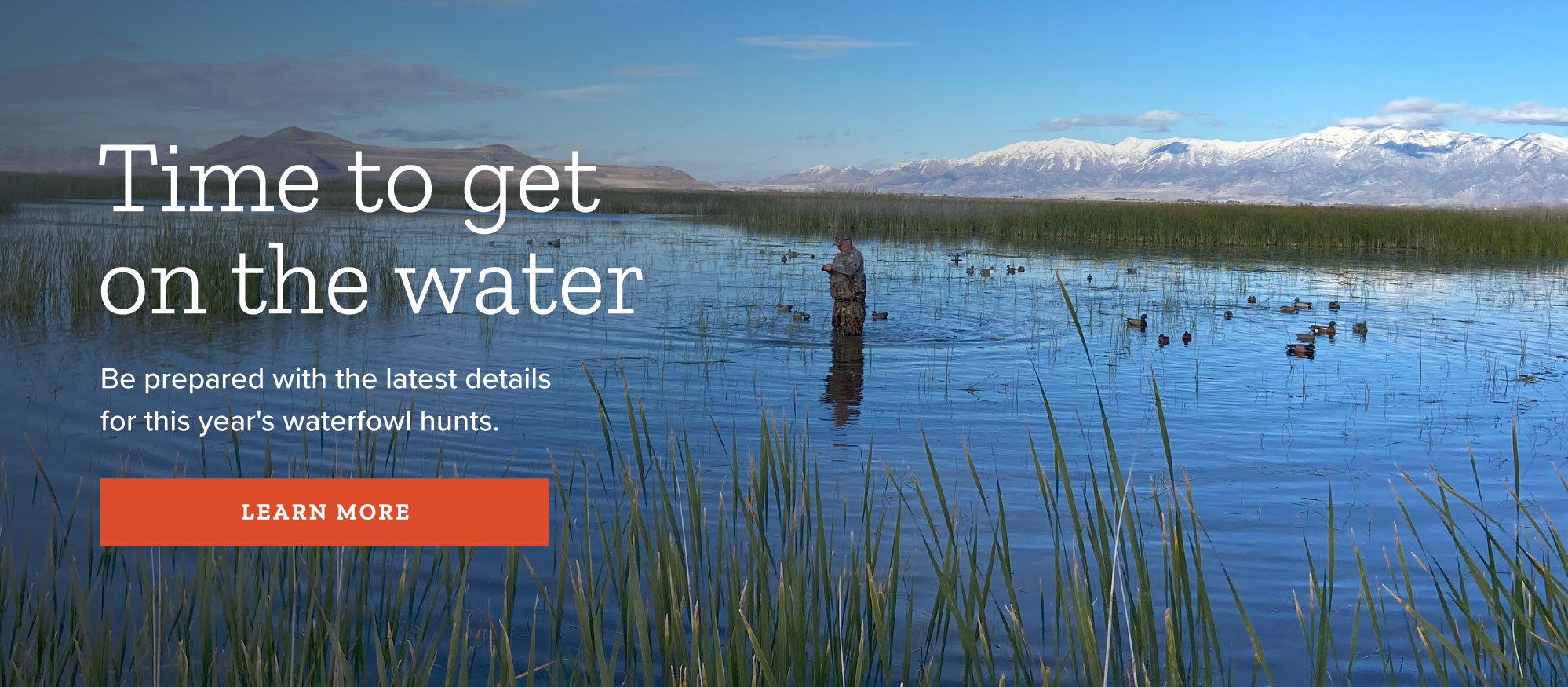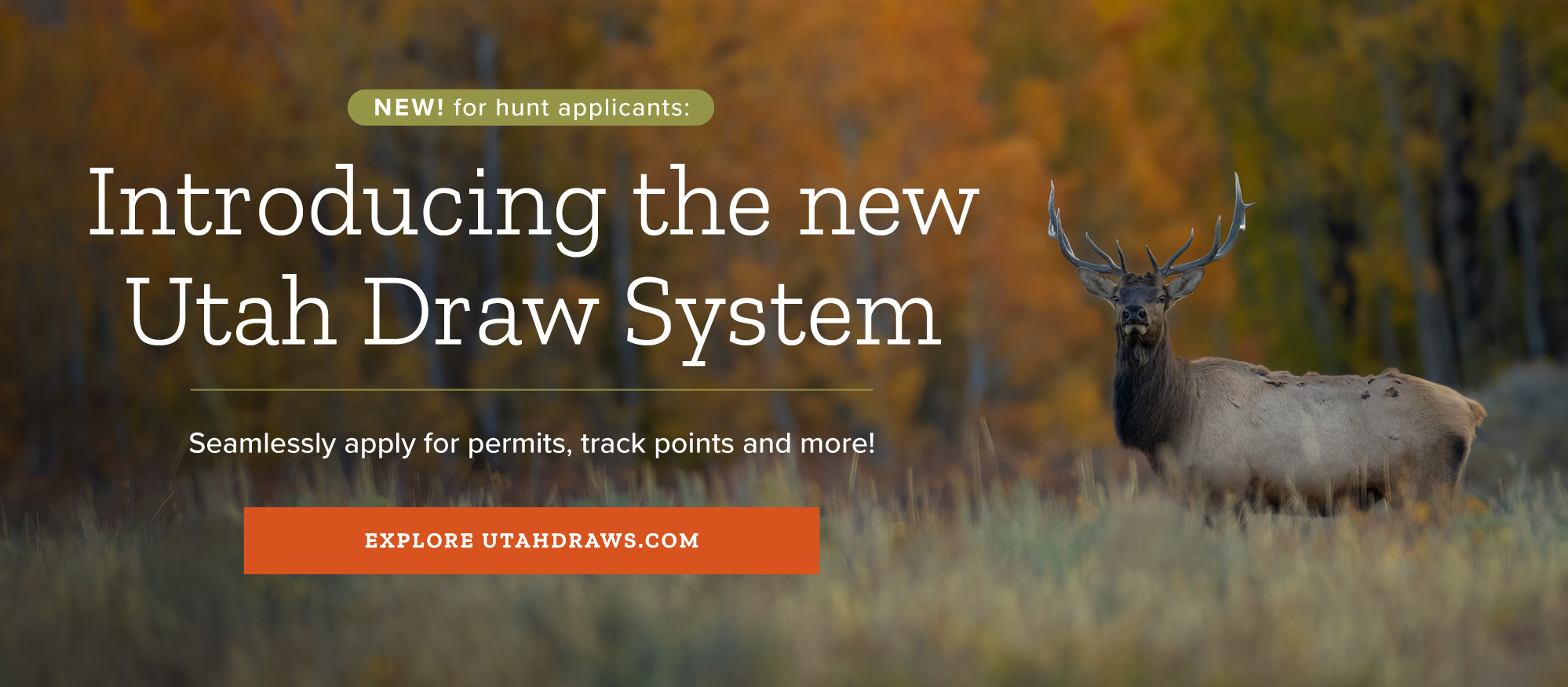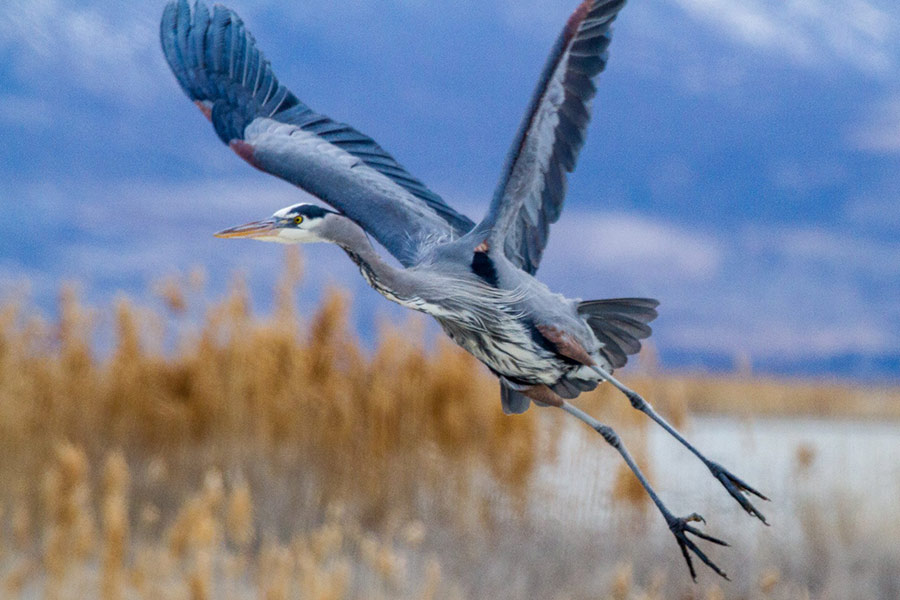Come see great blue herons in the wild at upcoming DWR event
Salt Lake City — Great blue herons are large, unique birds, and if you've ever wanted to see them in the wild, you should have a good opportunity at an upcoming Utah Division of Wildlife Resources viewing event.
Great blue herons are the most widespread North American heron and can be found from Alaska to northern South America. In Utah, they are the most commonly seen heron species, and can be found throughout the state, typically along the shorelines of lakes and rivers, as well as in marshes.
Every year from February to June, great blue herons nest in a rookery near the DWR's George S. and Dolores Doré Eccles Wildlife Education Center. The herons primarily feed on fish and amphibians, so they typically build their nests in tree-top colonies near the water. Males collect the nesting material — usually sticks of various sizes — and the females build the nests. The nests can sometimes reach up to 3 ½ feet in diameter. Once constructed, nests are often reused in following years (which is why the rookery at the Eccles Wildlife Education Center is a great place to see these birds).
The herons lay between one and seven eggs each year, and both parents alternate incubating the eggs for 25 to 29 days. Young can typically fly after two months, but sometimes remain at the nest for up to five months.
"We are excited to host this viewing event for the first time to provide an opportunity for visitors to see these birds fairly close," Eccles Wildlife Education Center Manager Ashley Kijowski said. "It's so fun to see the baby birds interacting with their parents, so we hope people and their families will take advantage of this viewing opportunity!"
Details for the event
The viewing event will take place on Saturday, April 20 from 11 a.m. to 2 p.m. at the Eccles Wildlife Education Center at 1157 S. Waterfowl Way in Farmington. DWR biologists will be available to answer questions and to help participants spot herons in the area. Spotting scopes and binoculars will be available for use, but you should bring your own if you have them. To avoid disturbing the herons, visitors should plan to stay in the parking lot area while observing the birds and not approach the rookery poles.
Family-friendly crafts and activities will be available inside the education center. Bathroom facilities are also available at the center.
While the event is free, participants are asked to register in advance on Eventbrite.



















